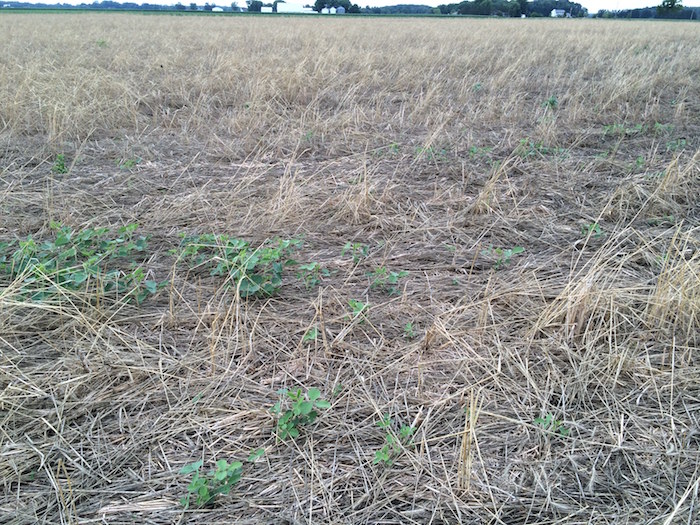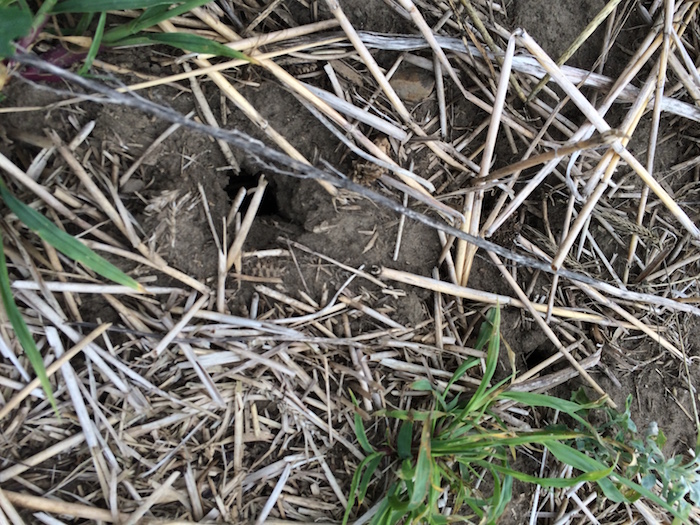No-Till Farmer has been contacted regarding potential outbreaks of voles in fields in northwestern Ohio that have caused major damage to crops.
Ron Snyder, who no-tills near Bowling Green, Ohio, says he had a 36-acre field that had about 20 acres picked nearly clean by voles, reducing his soybean yields to 8 bushels per acre this year. He says Wood County and western Sandusky County were especially hit hard this year.
“I normally cover crop everything and do straight no-till, but I’m working the ground right now and trying to control these things,” Snyder said from his tractor yesterday morning. “It’s just been an explosion. I went in and started ripping the ground and taking photos of vole holes. I’ve got to do something.”
If you’re looking for some suggestions and tips about dealing with voles in no-tilled fields, here are a few options:
- Click here to read an article we published in 2015. (You may need to have a digital subscription on our website to view.)
- Here’s a PowerPoint presentation about controlling voles in no-till systems that was given earlier this year at the National No-Tillage Conference (NNTC) by Barry Fisher, an agronomist for the NRCS’ Soil Health Division. (You need to be registered and logged in to the website to view the presentation.)
- We’ll be hosting a roundtable session — “Controlling Voles, Varmints and Other Problem Critters” — at the 25th annual NNTC in St. Louis, Jan. 10-13, 2017, where no-tillers can talk face to face and discuss potential solutions to controlling these pests.


More than Posts?
There have been suggestions from agricultural experts to place posts in fields so natural predators like hawks and owls can hunt voles, but Snyder says he would have needed a post every 10 feet to make a dent in the problem. He’s wondering if cover crops are to blame and whether he should switch to a species that winterkills and possibly cut back his seeding rate.
“A year ago we were very wet, and harvest was really wet. We got through the field, it dried up a little bit, we planted cover crops and the soil was bone dry and the plants didn’t come up,” he recalls. “In spring they took off like a shot. We kept getting rains and couldn’t get in the field to terminate the cover. By the time we got to plant, the rye was over 6 feet tall and way too thick. With cover on ground in some of fields the voles had free reign.”
Grower Jack Recker also e-mailed No-Till Farmer and said he’d heard “coffee shop talk” in his area about Snyder’s problems.
“I’m planting corn in a very thick residue of leftover rye and soybean stubble and it’s also seeded with oats as a cover crop,” he says. “Wondering what to do, I looked and sure enough the voles are in my field. I don’t want them to eat all the seed I planted next spring.”
If you’ve successfully managed any vole problems in your field, please consider leaving a comment below detailing your management, or send me an email at jdobberstein@lessitermedia.com.







Post a comment
Report Abusive Comment